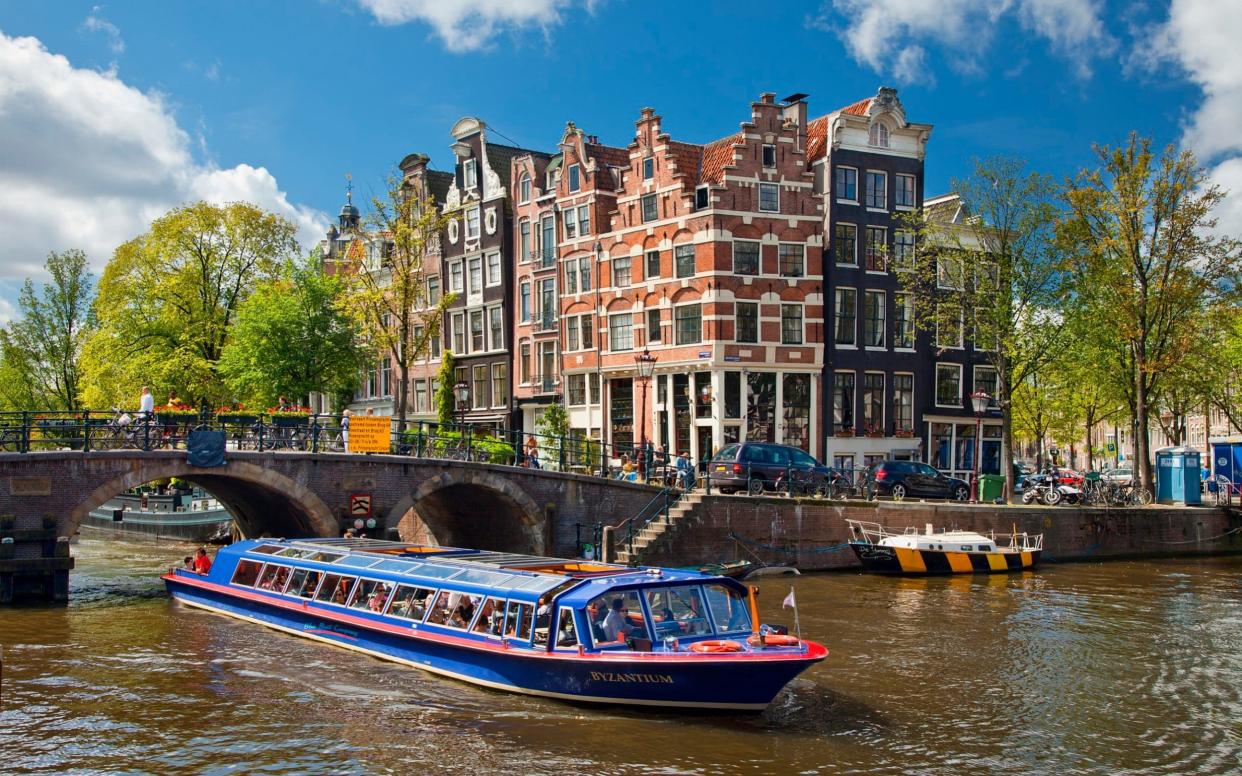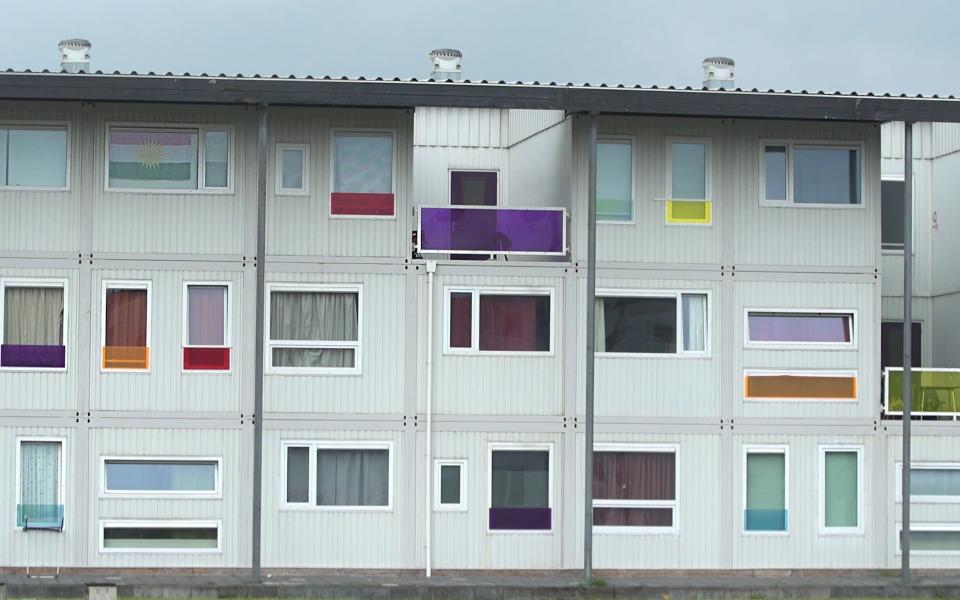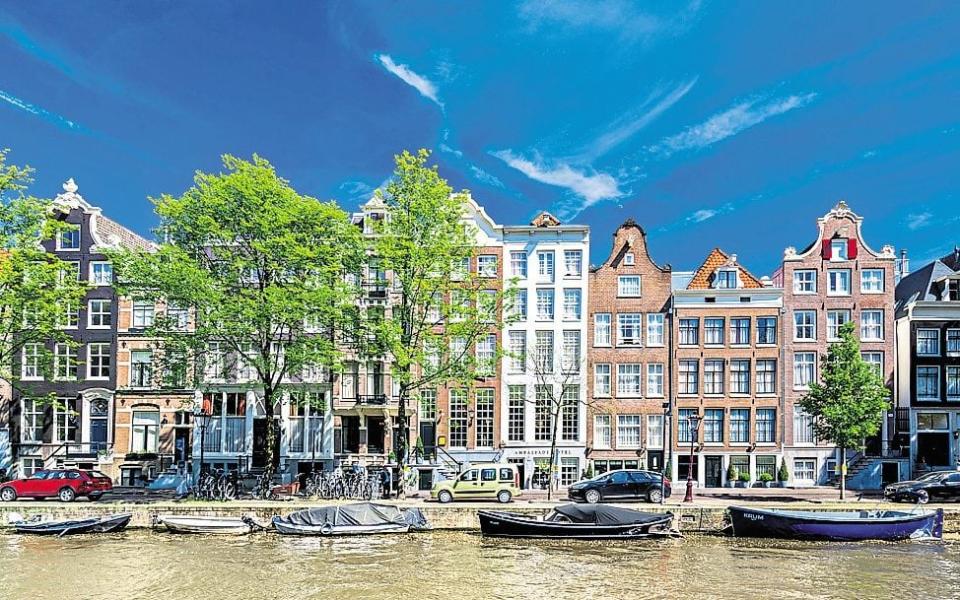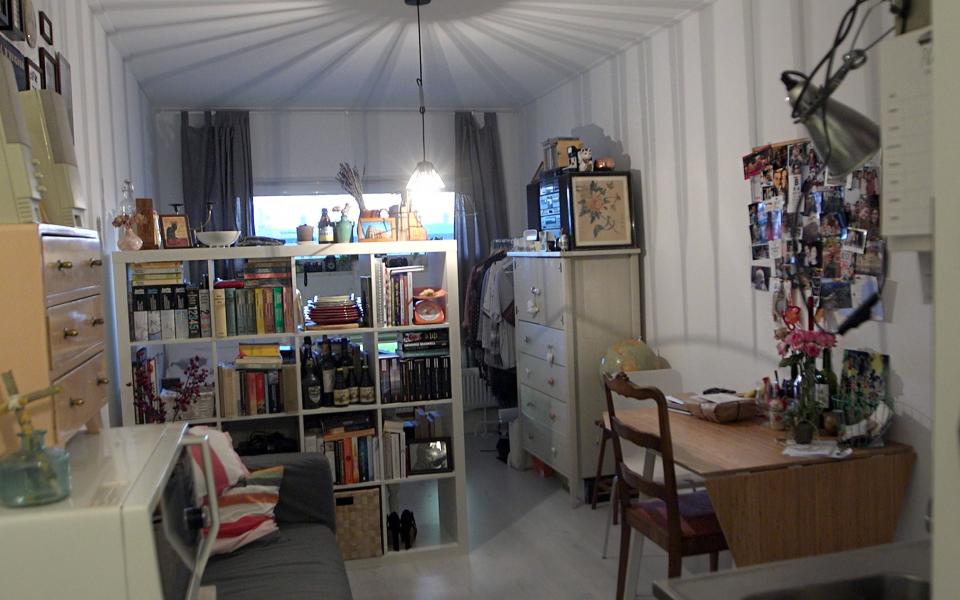Inside Amsterdam's pop-up village with a social conscience

In an old sports field in a quiet suburb of Amsterdam sits an unusual structure. Made from reconditioned wood and spruced up with colourful Plexiglas windows, it’s hard to believe that the complex is, in fact, a small village, home to 565 people.
It’s one answer to the crippling – and perhaps unlikely – housing crisis that is hitting young people in the Netherlands.
Startblok Riekerhaven, set 30 minutes outside the city centre (or in local-speak, a 15-minute bike ride), is a housing project for young people aged between 18 and 28 who earn less than £30,000 a year.
Sandwiched amongst overgrown green areas and a busy bypass, Startblok’s simple exterior mirrors the chilled, fuss-free youngsters who inhabit it; it’s a jazzed-up pre-fab meets university hall of residence. The chalky grey building, which was made in a factory and is stacked two or three floors high, was conceived and built by De Key, which specialises in building affordable accommodation for young people.

The ad hoc nature of the set-up belies the airiness of the homes: the studios are open-plan and include a kitchen, a bedroom and an en suite bathroom, as well as communal social spaces.
One of the most remarkable features of the project is the personal touch afforded to each studio. There are no stuffy regulations about hanging shelves, painting walls or even having pets. Every flat you walk into – from the feminine interior perfectionist with her ornate wall paintings, to the budding DJ’s minimalist nest decorated with a panoply of vinyls – is completely personalised. All the residents are given the freedom to make a recycled wooden carton into a home.
amsterdam rent
Property prices in Amsterdam are on the up; according to figures from the Dutch Association of Realtors, they increased 23 per cent last year, compared with London where the Office for National Statistics says the rate of growth has slumped to 1.3 per cent. In Holland’s general election in March, the housing shortage was one of the four main issues that dominated the campaign.
As in the UK, rising property prices have made it difficult for young Dutch people buying their first home. The average cost for a one-bedroom apartment outside Amsterdam’s city centre was £871 per month in May 2017; In the centre of town, that rises to £1,141.
But for the Dutch 20-somethings who now call Startblok home, the €510 monthly rent for a 270 sq ft studio flat is a lifeline that enables them to live in one of Europe’s most expensive cities.

A quirk of the system means that rents can be as low as €393 per month – as long as you have your own front door. A social housing scheme run by the Amsterdam Municipality offers subsidies to young nationals living in such a housing unit with its own entrance.
While they might be separated by doors like an ordinary block, it is establishing itself as a fully fledged, sociable community.
“The selling point for me was the balance between how sociable it is, but also how you can have your own space,” says Deniz Yilmaz, a Dutch 24-year-old studying at the University of Amsterdam. “There are parties and always people to chat to, but sometimes there are days when, after a long day at school or work, you can just come home and close your front door.”
All the residents are given the freedom to make a recycled wooden carton into a home.
To reinforce the aim of social cohesion, no couples are allowed to move into the project together and families are generally not permitted.
It’s also become a beacon for young people who have fled to the Netherlands during Europe’s ongoing migrant crisis. Half of the residents are refugees who have gained permanent status, having recently arrived in the country from Eritrea and Syria; Startblok provides a place to integrate culturally.
Ahmad, 23, who left Syria in September 2015, said: “It wasn’t easy in the beginning. We had to learn the language, the culture, the traditions. It was difficult to follow another kind of culture, especially because we are from the Middle East so it’s completely different.
“But now I have a lot of Dutch friends all because of Startblok – even my girlfriend is Dutch.”
“I have met so many people from different cultures,” says Mirthe van den Hee, Ahmad’s girlfriend, a 24-year-old who lives and works in Startblok.
It is a microcosm inside: after dinner with her Eritrean neighbours, who are celebrating two years of being in the Netherlands, she’ll be attending a Syrian party in Startblok’s social club, and tomorrow she will travel home to celebrate Dutch Mother’s Day.

But this spot of harmony in a rather unlikely spot may not last for long. Amsterdam’s housing market is standing on such tenuous ground that Startblok is under threat, despite the huge waiting list for a home in the complex.
Its lease on the tatty football ground is only for nine years, and there is already talk of the complex being demolished and replaced with properties aimed at wealthier young professionals.
The closure of Startblok would be a sad loss. It’s a forward-thinking solution to the housing crisis, giving independence to the young people born and raised in the Netherlands, while offering a stable home to those who had little choice but to flee there. This social experiment is a vital addition to the city that could very well pay off.

